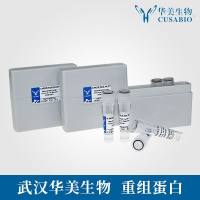Direct Attachment of Conjugate Groups to the 5′ Terminus of Oligodeoxyribonucleotides
互联网
- Abstract
- Table of Contents
- Materials
- Figures
- Literature Cited
Abstract
This unit gives protocols for the attachment of intercalating and photoreactive conjugate groups to oligodeoxyribonucleotides. Protocols are given for acridine? and psoralen?conjugated oligonucleotides, and include attachment of the linker, preparation of the phosphoramidite, coupling to the oligonucleotide, deprotection, purification, and characterization.
Table of Contents
- Basic Protocol 1: Direct Addition of Acridine Derivatives to the 5′ End of Oligodeoxyribonucleotides
- Support Protocol 1: Purification and Characterization of Oligonucleotide‐Acridine Conjugates
- Basic Protocol 2: Direct Addition of Psoralen Derivatives to the 5′ End of Oligodeoxyribonucleotides
- Reagents and Solutions
- Commentary
- Literature Cited
- Figures
Materials
Basic Protocol 1: Direct Addition of Acridine Derivatives to the 5′ End of Oligodeoxyribonucleotides
Materials
Support Protocol 1: Purification and Characterization of Oligonucleotide‐Acridine Conjugates
Materials
Basic Protocol 2: Direct Addition of Psoralen Derivatives to the 5′ End of Oligodeoxyribonucleotides
Materials
|
Figures
-

Figure 4.3.1 Synthesis of acridine and psoralen derivatives functionalized with hydroxylated linkers. View Image -

Figure 4.3.2 Synthesis of the phosphoramidite derivatives of acridine and psoralen ligands. View Image -

Figure 4.3.3 Direct addition of ligands to the 5′terminus of oligodeoxyribonucleotides. View Image -

Figure 4.3.4 Absorption spectra of Acr(CH2 )6 pd[T3 C2 T C2 TCT] (left) and Pso(CH2 )6 pd[T4 5‐Me C2 T5‐Me CT5‐Me C3 T5‐Me CT] (right) recorded in water. View Image
Videos
Literature Cited
| Literature Cited | |
| Asseline, U., Thuong, N.T., and Hélène, C. 1986. Oligothymidylates substitutés en position 3′ par un dérivè de l' acridine. Nucleosides Nucleotides 5:45‐63. | |
| The authors would like to express their appreciation to their collaborators M. Chassignol, V. Roig, and Y. Aubert for their contribution to the development of varied oligonucleotide sequences linked to acridine and psoralen derivatives. This work was supported by Rhône‐Poulenc, the Agence Nationale de Recherches sur le SIDA, and bio‐Mérieux. | |
| Asseline, U. and Thuong, N.T. 1988. Oligothymidylates substitués par un dérive de l' acridine en position 5′, à la fois en position 5′ et 3′ ou sur un phosphate internucleotidique. Nucleosides Nucleotides 7:431‐455. | |
| Asseline, U., Toulmé, F., Thuong, N. T., Delarue, M., Montenay‐Garestier, T., and Hélène, C. 1984. Oligodeoxynucleotides covalently linked to intercalating dyes as base sequence–specific ligands. Influence of dye attachment site. EMBO J. 3:795‐800. | |
| Asseline, U., Bonfils, E., Dupret, D., and Thuong, N.T. 1996. Synthesis and binding properties of oligonucleotides covalently linked to an acridine derivative: A new study of the influence of the dye attachment site. Bioconjugate Chemistry 7:369‐379. | |
| Costes, B., Girodon, E., Ghanem, N., Chassignol, M., Thuong, N.T., Dupret, D., and Goossens, M. 1993. Psoralen‐modified oligonucleotide primers improve detection of mutations by denaturing gradient gel electrophoresis and provide an alternative to GC‐clamping. Hum. Mol. Genet. 2:393‐397. | |
| Dupret, D., Gossens, M., Chassignol, M., and Thuong, N.T. 1994. European Patent No. 0596028 A1, 1994,05,11. | |
| Giovannangeli, C., Thuong, N.T., and Hélène, C. 1992. Oligodeoxynucleotide‐directed photo‐induced cross‐linking of HIV proviral DNA via triple‐helix formation. Nucleic Acids Res. 20:4275‐4281. | |
| Giovannangeli, C., Perrouault, L., Escudé, C., Thuong, N.T., and Hélène, C. 1996. Specific inhibition of in vitro transcription elongation by triplex‐forming oligonucleotide‐intercalator conjugates targeted to HIV proviral DNA. Biochemistry 35:10539‐10548. | |
| Grigoriev, M., Praseuth, D., Guieysse, A.L., Robin, P., Thuong, N.T., Hélène, C., and Harel‐Bellan, A. 1993. Inhibition of gene expression by triple helix–directed DNA cross‐linking at specific sites. Proc. Natl. Acad. Sci. USA. 90:3501‐3505. | |
| Kurfürst, R., Roig, V., Chassignol, M., Asseline, U., and Thuong, N.T. 1993. Oligo‐α‐Deoxyribonucleotides with a modified nucleic base and covalently linked to reactive agents. Tetrahedron 49:6975‐6990. | |
| Raynaud, F., Asseline, U., Roig, V., and Thuong, N.T. 1996. Synthesis and characterization of O6‐modified deoxyguanosine‐containing oligodeoxyribonucleotides for triplex helix formation. Tetrahedron 52:2047‐2064. | |
| Sun, J.S., François, J.C., Montenay‐Garestier, T., Saison‐Behmoaras, T., Roig, V., Thuong, N.T., and Hélène, C. 1989. Sequence‐specific intercalating agents. Intercalation at specific sequences on duplex DNA via major groove recognition by oligonucleotide‐intercalator conjugates. Proc. Natl. Acad. Sci. USA. 86:9198‐9202. | |
| Takasugi, M., Guendouz, A., Chassignol, M., Decout, J.L., Lhomme, J., Thuong, N.T., and Hélène, C. 1991. Sequence‐specific photo‐induced cross‐linking of the two strands of double‐helical DNA by a psoralen covalently linked to a triple helix forming oligonucleotide. Proc. Natl. Acad. Sci. USA. 88:5602‐5606. | |
| Thuong, N.T. and Chassignol, M. 1988. Solid phase synthesis of oligo‐α‐ and oligo‐β‐deoxynucleotides covalently linked to an acridine. Tetrahedron Lett. 29:5905‐5908. | |
| Thuong, N.T., Hélène, C., and Asseline, U. 1984. European Patent No. 84‐400143‐8. | |
| 1989. U.S. Patent No. 4‐835‐263. | |
| Thuong, N.T., Asseline, U., Roig, V., Takasugi, M., and Hélène, C. 1987. Oligo(α‐deoxynucleotide)s covalently linked to intercalating agents: Differential binding to ribo‐ and deoxyribopolynucleotides and stability towards nuclease digestion. Proc. Natl. Acad. Sci. USA. 84:5129‐5133. |







